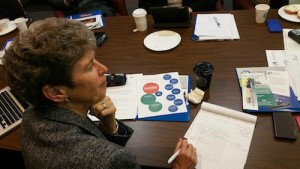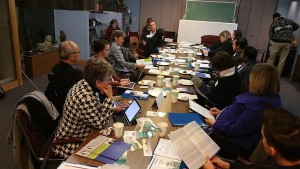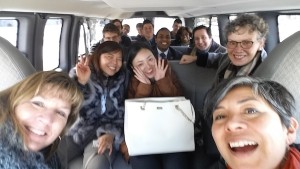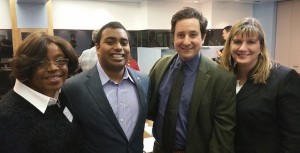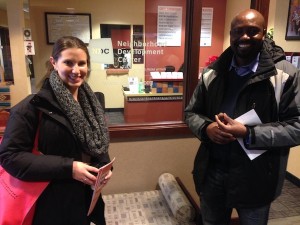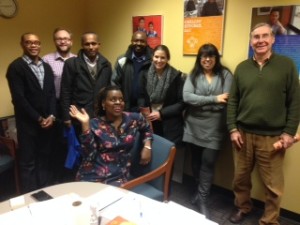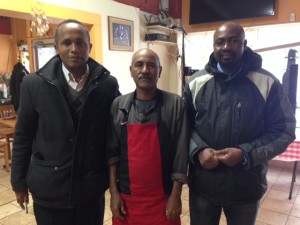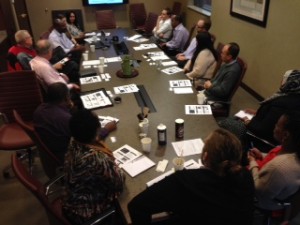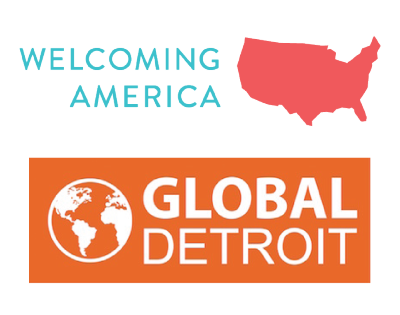Diverse by Design travels to Detroit
By Erika Fiola
On Monday, January 26, nine members of the Cincinnati USA Regional Chamber’s Diverse by Design initiative and Mayor Cranley’ss Immigration Task Force traveled to Detroit to learn about organizations and initiatives focused on attracting and retaining immigrants and international students. The purpose of the visit was for the two cities to learn from each other and deepen the impact of their individual efforts to create robust economic growth in their regions through immigrant inclusion. View the photos.
Steve Tobocman, our host and the guiding force behind Global Detroit, assembled a powerful group of Detroit leaders to share their story. In our brief trip, we had the opportunity to meet four Detroit city council members, representatives from the governor’s office and leaders of many of Detroit’s immigrant communities.
The trip began with a presentation from Jeff Towns, the Executive Director of the Michigan Global Talent Retention Initiative (GTRI). Michigan’s experience will inform planning by the Diverse by Design Immigration Action Team for an International Student Career Forum on March 10 at the University of Cincinnati.
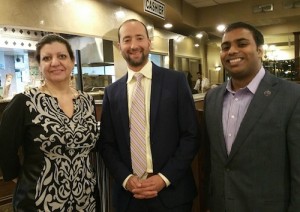 More of the leaders working to make Detroit more immigrant-friendly joined our group for dinner at Al Ameer in Dearborn, an inner ring suburb with a large Arabic population. For University of Cincinnati student Rebecca Lu Zhang, this was her first taste of shawarma, falafel and more.
More of the leaders working to make Detroit more immigrant-friendly joined our group for dinner at Al Ameer in Dearborn, an inner ring suburb with a large Arabic population. For University of Cincinnati student Rebecca Lu Zhang, this was her first taste of shawarma, falafel and more.
The next morning started with presentations from Steve Tobocman and Beth Szurpicki of Global Detroit that focused on their immigrant-friendly opportunity neighborhoods and their cultural ambassadors program. The group also heard presentations from Mary Lane of Welcome Mat Detroit, Christine Sauve of Welcoming Michigan and Annie Fenton of Upwardly Global. There was also a rewarding conversation about program evaluation and effective ways we can measure success.
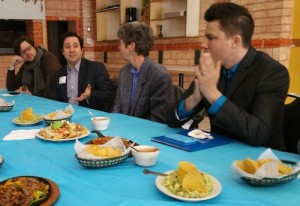 The morning concluded with a tour of some of Detroit’s ethnic neighborhoods, including Banglatown and Mexicantown and finished with a stop for lunch at El Nacimiento.
The morning concluded with a tour of some of Detroit’s ethnic neighborhoods, including Banglatown and Mexicantown and finished with a stop for lunch at El Nacimiento.
While quick, all participants agreed that it was a very worthwhile trip that stimulated lots of new ideas on how we can better welcome and engage immigrants here in Cincinnati. Our thanks to the Knight Foundation and the JM Kaplan Fund for providing the funding for the trip through the WE Global Network.
This post originally appeared on Agenda 360’s blog.

